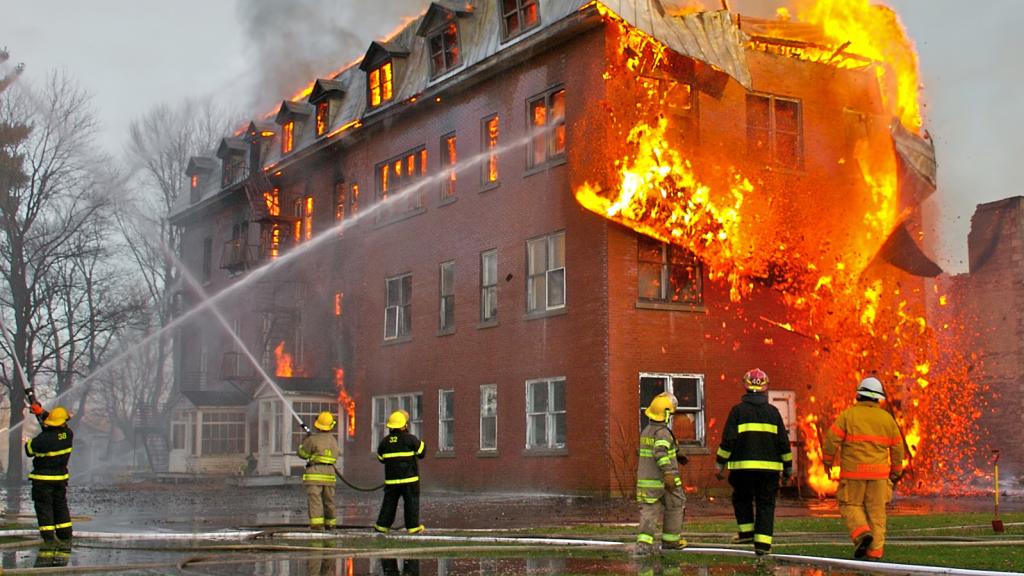The process of restoring fire-damaged historical buildings is a complex and multifaceted endeavor, requiring a careful blend of preservation, innovation, and compliance. By addressing vulnerabilities, applying meticulous restoration techniques, and navigating regulatory challenges, historical buildings can be successfully restored, preserving their legacy for future generations.
Historical Building Vulnerabilities
Historical buildings face several vulnerabilities that make them particularly susceptible to fire damage. The materials and construction techniques commonly used in older buildings pose unique risks, often increasing the effects of a fire.
- Construction Materials: Timber beams and dry, aged wood, which are prevalent in many historical structures, act as natural fuel, causing fires to spread rapidly. These materials are also difficult to replace in a manner that retains historical accuracy.
- Hidden Spaces: Many historical buildings have concealed spaces—such as attics, voids in walls, and behind ornamental features—that allow fire to travel undetected, making it harder to contain. These hidden areas also complicate fire detection systems, as fires may spread for a long time before becoming apparent.
- Complex Layouts: Narrow corridors, steep staircases, and unconventional building layouts make evacuation difficult and impede firefighters’ access during an emergency. Older buildings often lack the fire safety systems (like sprinklers and alarms) present in modern structures, further increasing their risk.
- Cultural Artifacts: Historical buildings often house irreplaceable artifacts, artwork, and cultural treasures. The loss of these items represents not only a structural risk but a profound cultural one, as many of these artifacts cannot be restored or replaced if damaged.
By recognizing these vulnerabilities, preservationists can develop fire prevention strategies tailored to the specific risks posed by historical buildings. This proactive approach ensures better protection of these architectural and cultural treasures.
Restoration Techniques and Considerations
Restoring a fire-damaged historical building involves meticulous techniques to maintain the building’s authenticity while addressing the damage caused by fire. The process typically begins with a detailed assessment of the extent of the damage. This assessment informs a customized restoration plan, focusing on both structural integrity and historical accuracy.
- Gentle Cleaning Methods: The first step in restoring fire-damaged interiors is often cleaning. Specialized techniques are used to remove soot, smoke residues, and debris without damaging the building’s surfaces. Delicate architectural features like moldings, carvings, and frescoes are cleaned using gentle, non-abrasive methods and tools designed to protect their integrity.
- Structural Stabilization: Fire often weakens the structural components of historical buildings, necessitating careful stabilization. Restoration teams work with engineers to reinforce load-bearing elements while respecting the original construction. This includes using methods that blend seamlessly with the building’s architecture to maintain its historical character.
- Material Selection: To preserve historical accuracy, it is essential to use materials that match the originals as closely as possible. Restoration teams seek out materials that reflect the building’s original composition, texture, and color. When exact matches are unavailable, efforts are made to replicate these materials in a way that honors the building’s historical value.
These careful restoration techniques ensure that the building retains its historical integrity, while also making necessary improvements to protect it from future damage.
Regulatory Hurdles and Compliance
In restoring fire-damaged historical buildings, navigating the regulatory landscape is one of the most challenging aspects of the process. Historical preservation regulations often stem from local, state, and federal agencies, each with its own stringent guidelines designed to protect a building’s authenticity and cultural significance.
- Permitting and Approvals: Before beginning restoration work, it is necessary to obtain various permits that ensure compliance with preservation laws. This often involves working with local historical societies, architectural review boards, and state or federal preservation bodies to ensure that the restoration plan adheres to established guidelines. Permits may also be required for specific tasks, such as structural reinforcement or material replacement.
- Adhering to Preservation Standards: During restoration, preservationists must use specific techniques and materials outlined by preservation standards. These regulations dictate how much of the original structure can be altered or replaced. Failure to follow these standards can result in significant penalties and, more importantly, the loss of the building’s historical significance.
- Balancing Modern Safety with Historical Integrity: While historical preservation guidelines prioritize maintaining the building’s authenticity, modern safety standards—such as fire prevention, structural codes, and accessibility—must also be integrated into the restoration. This balancing act requires innovative solutions that preserve the aesthetic and historical elements while incorporating essential safety features, like fire suppression systems or reinforced exits, in a non-intrusive manner.
Navigating these regulatory hurdles requires collaboration between architects, engineers, preservationists, and regulatory bodies to ensure that restoration work meets both historical and modern standards.




